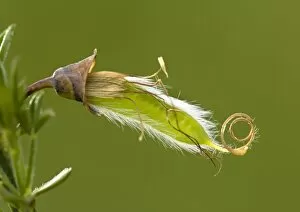Common Broom Collection
The common broom, scientifically known as Cytisus scoparius, is a vibrant and versatile plant that has captured the fascination of botanists and nature enthusiasts alike
All Professionally Made to Order for Quick Shipping
The common broom, scientifically known as Cytisus scoparius, is a vibrant and versatile plant that has captured the fascination of botanists and nature enthusiasts alike. With its stunning yellow flowers and delicate green foliage, this species stands out in any landscape. One captivating image showcases a colour lithograph of the Common Broom, highlighting its intricate details. Another photograph captures a ripe downy seed pod on a split stem, revealing the plant's reproductive cycle. These visuals offer glimpses into the life cycle of this remarkable species. Also referred to as Scotch broom or wild broom, Cytisus scoparius has been immortalized in antique engravings and Victorian botanical illustrations from 1863. These historical depictions serve as testaments to its enduring appeal throughout generations. Beyond its aesthetic allure, the common broom holds medicinal properties that have been recognized for centuries. It finds mention in texts dedicated to herbal plants due to its healing potential. This further emphasizes the significance of this humble shrub within traditional medicine practices. Not limited by borders or language barriers, this resilient plant goes by various names across different regions: Genet a balais in French or English broom in some areas. Such diversity only adds to its mystique and global recognition. Even under microscopic examination, with light micrographs capturing every minute detail of its stem structure, the common broom continues to amaze scientists with its complexity at both macroscopic and microscopic levels. Whether admired for its beauty through artistic renderings or studied for scientific purposes like medicinal applications or anatomical exploration – there is no denying that Cytisus scoparius holds an esteemed place among flora enthusiasts worldwide.











